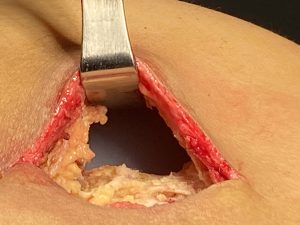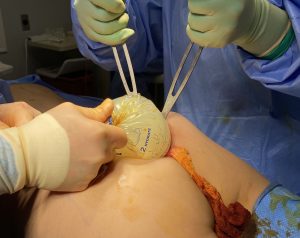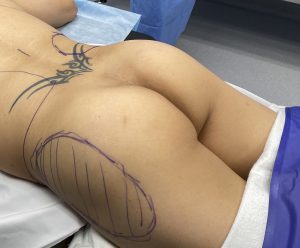Background: Buttock implants can be placed either in the subfascial, intramuscular or submuscular location. Each pocket location has its advantages and disadvantages. While the intra- and submuscular pocket locations have many advantages their one disadvantage is the size of implant that can be placed. As a general rule, implant sizes of 400ccs or less can be accommodated. For many patients this is adequate initially or they are willing to accept a smaller implant size than ideally desired for the advantages of better soft tissue coverage and a lower complication risk.
Some patients may request secondary buttock implant surgery in pursuit of a larger buttock augmentation result. The two questions about that quest is when and how much more volume can be added. I would recommend that one wait at least six months and preferably a year before replacing buttock implants. This not only gives the tissue plenty of time to heal and accommodate to the implant but also allows the patient to adjust to the change and determine whether more size is really needed.
When it comes to how much of a bigger implant can be placed, the first implant does act as a tissue expander. A good guideline is that a 50% increase can almost always be obtained. Another guideline to follow is that most of the volume increase should be in projection and not base width.
Case Study: This female had a prior buttock implant surgery in which 400cc implants were placed in the intramuscular space. The projection was 4.1cms with a 14.5cm base diameter.
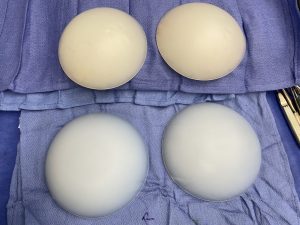
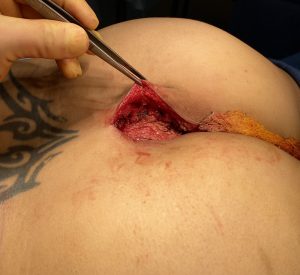
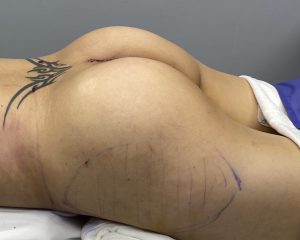
A 50% buttock implant increase is what can be safely done in most secondary buttock implant replacements. Ensuring the most of this volume increase is in projection and minimally in base diameter is important to avoid excessive tension on the closure. In some cases this may require a custom buttock implant design to do so.
An interesting question, although not commonly done, is how much volume could be obtained if one did a third implant exchange? That answer is 25%. It is not 50% as the tissue stretch becomes less each time.
Case Highlights:
1) Buttock implant replacements for a larger size can generally accommodate a 50% size increase in implant volume.
2) Getting the new larger implant in place is challenged by the existing size of the incision in which passage through it is aided by a funnel insertion device.
3) With newer larger implants it is important to keep the base diameter of the implant similar and make the volume increase in projection.
Dr. Barry Eppley
Indianapolis, Indiana



